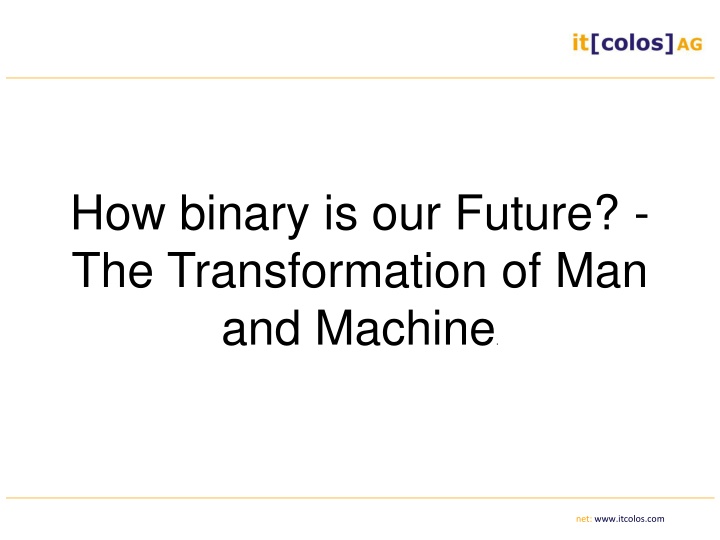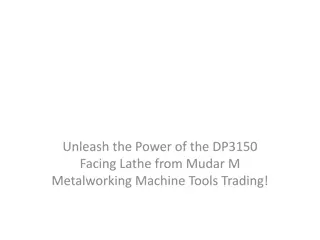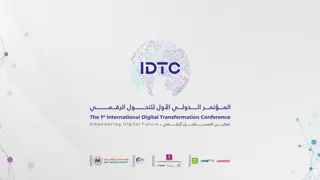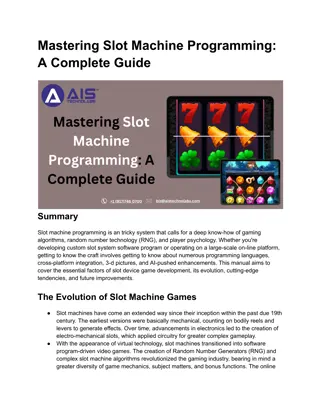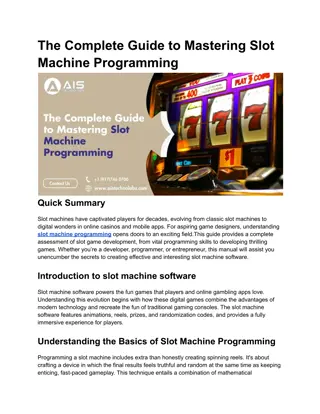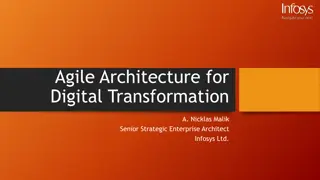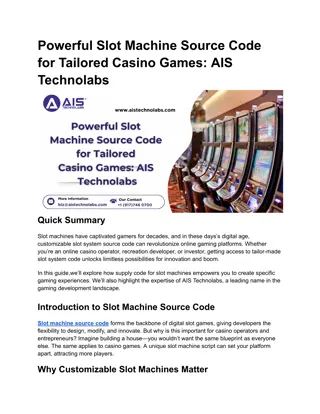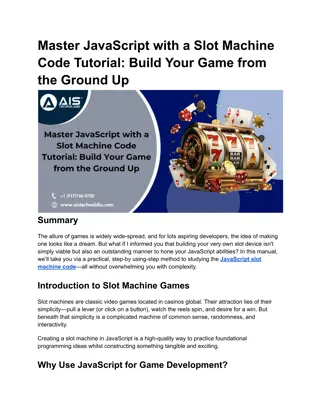The Transformation of Man and Machine in Our Future
In an era marked by digitization and digitalization, customers demand seamless digital experiences, quick services, and efficient business processes. Learn about the evolution from analogue to digital, the impact on industry, and the importance of meeting customer expectations.
Download Presentation

Please find below an Image/Link to download the presentation.
The content on the website is provided AS IS for your information and personal use only. It may not be sold, licensed, or shared on other websites without obtaining consent from the author.If you encounter any issues during the download, it is possible that the publisher has removed the file from their server.
You are allowed to download the files provided on this website for personal or commercial use, subject to the condition that they are used lawfully. All files are the property of their respective owners.
The content on the website is provided AS IS for your information and personal use only. It may not be sold, licensed, or shared on other websites without obtaining consent from the author.
E N D
Presentation Transcript
How binary is our Future? - The Transformation of Man and Machine. net: www.itcolos.com
Agenda 1 2 Machine Learning 3 4 Industry 4.05 Digitization & Digitalization Blockchain Q&A Questions! Answers? net: www.itcolos.com
Agenda 1 2 Machine Learning 3 4 Industry 4.05 Digitization & Digitalization Blockchain Q&A Questions! Answers? net: www.itcolos.com
Digitization and Digitalization Customers want a quick and seamless digital experience, and they want it now Customers have been spoiled. Thanks to companies such as Amazon and Apple Digitization is the automation of existing manual and paper-based processes, enabled by the digitization of information; from an analogue to a digital format. Quelle: https://www.linkedin.com/pulse/digitization-vs-digitalization-digital-transformation-bpm from Accelerating the digitization of business processes by Shahar Markovitch and Paul Willmott net: www.itcolos.com
Digitization and Digitalization Why? Customer-Expectations: Quick delivery of products Swiftly services seamless user experience online accounts real-time reports Need of Radical efficient business processes: Intuitive interfaces around-the-clock availability real-time fulfilment personalized treatment global consistency, and zero errors competitive prices because of lower costs better operational controls, and less risk. Quelle: https://www.mckinsey.com/business-functions/digital-mckinsey/our-insights/accelerating-the-digitization-of-business- processes net: www.itcolos.com
Digitization and Digitalization What is Digitization? Digitization defined in the context of processes In the context of physical information carriers , such as paper documents or analogue, printed images, we mainly digitize by using document scanners in business (or simply scan or take a picture with your mobile). Digitization is the transformation from analogue to digital or digital representation of a physical item with the goal to digitize and automate processes or workflows. What is Digitalization? Digitalization means the use of digital technologies and of data (digitized and natively digital) in order to create revenue, improve business, replace/transform business processes (not simply digitizing them) and create an environment for digital business, whereby digital information is at the core. Quelle: https://www.mckinsey.com/business-functions/digital-mckinsey/our-insights/accelerating-the-digitization-of-business- processes net: www.itcolos.com
Digitization and Digitalization Quelle: https://www.i-scoop.eu/digitization-digitalization-digital-transformation-disruption/ net: www.itcolos.com
Digitization and Digitalization Digitalization leads to digital business, digital transformation requires digital business and digitization Reinvent entire business processes Reducing documents Automated decision making Redesign of roles and structures Data Models Performance tracking Training Benefits Cutting the costs Saving time Automatic collect data Process performance Real time reports Supply-chain-quality Monitoring customer behaviour and feedback Building in-house capabilities Quelle: https://www.i-scoop.eu/digitization-digitalization-digital-transformation-disruption/ net: www.itcolos.com
Digitization and Digitalization net: www.itcolos.com
Digitalization with ERP, e.g. SAP net: www.itcolos.com
Digitalization net: www.itcolos.com
1 2 Machine Learning 3 4 Industry 4.05 Digitization & Digitalization Blockchain Q&A Questions! Answers? net: www.itcolos.com
Machine Learning https://www.youtube.com/watch?v=_pILDol6X-Q https://www.youtube.com/watch?v=TBF7EE2xnN4 https://www.youtube.com/watch?v=IS8T71kUgWo net: www.itcolos.com
Machine Learning https://www.techleer.com/articles/203-machine-learning-algorithm-backbone- of-emerging-technologies/ net: www.itcolos.com
Machine Learning Machine learning is a field of computer science that gives computers the ability to learn without being explicitly programmed. (1959 by Arthur Samuel) Categorization of machine learning tasks classification inputs are divided into two or more classes, and the learner must produce a model that assigns unseen inputs to one or more (multi-label classification) of these classes. regression, also a supervised problem, the outputs are continuous rather than discrete. clustering, a set of inputs is to be divided into groups. Unlike in classification, the groups are not known beforehand, making this typically an unsupervised task. Density estimation finds the distribution of inputs in some space Dimensionality reduction simplifies inputs by mapping them into a lower-dimensional space. Topic modelling is a related problem, where a program is given a list of human language documents and is tasked to find out which documents cover similar topics net: www.itcolos.com
1 2 Machine Learning 3 4 Industry 4.05 Digitization & Digitalization Blockchain Q&A Questions! Answers? net: www.itcolos.com
Blockchain Technology What is Blockchain? Blockchain is a distributed database that holds records of digital data or events in a way that makes them tamper- resistant. While many users may access, inspect, or add to the data, they can t change or delete it. The original information stays put, leaving a permanent and public information trail, or chain, of transactions. How will Blockchain Technology Affect the Supply Chain? blockchain technology allows us to more securely and transparently track all types of transactions Every time a product changes hands, the transaction could be documented creating a permanent history of a product, from manufacture to sale dramatically reduce time delays, added costs, and human error that plague transactions today. Recording the quantity and transfer of assets - like pallets, trailers, containers, etc. - as they move between supply chain nodes (Talking Logistics) Tracking purchase orders, change orders, receipts, shipment notifications, or other trade-related documents Assigning or verifying certifications or certain properties of physical products; for example determining if a food product is organic or fair trade (Provenance) Linking physical goods to serial numbers, bar codes, digital tags like RFID, etc. Sharing information about manufacturing process, assembly, delivery, and maintenance of products with suppliers and vendors Quelle: https://www.newsbtc.com/2018/01/14/blockchain-technology-is-changing-the-logistics-industry/ http://www.supplychain247.com/article/why_blockchain_is_a_game_changer_for_the_supply_chain net: www.itcolos.com
Blockchain Technology net: www.itcolos.com
Blockchain Technology Benefits in a Nutshell - blockchain s potential. Regardless of the application, blockchain offers the following advantages: Enhanced Transparency. Documenting a product s journey across the supply chain reveals its true origin and touchpoints, which increases trust and helps eliminate the bias found in today s opaque supply chains. Manufacturers can also reduce recalls by sharing logs with OEMs and regulators (Talking Logistics). Greater Scalability. Virtually any number of participants, accessing from any number of touchpoints, is possible (Forbes). Better Security. A shared, indelible ledger with codified rules could potentially eliminate the audits required by internal systems and processes (Spend Matters). Increased Innovation. Opportunities abound to create new, specialized uses for the technology as a result of the decentralized architecture. net: www.itcolos.com
1 2 Machine Learning 3 4 Industry 4.05 Digitization & Digitalization Blockchain Q&A Questions! Answers? net: www.itcolos.com
Industry 4.0 Definition: Industry 4.0 is a name for the current trend of automation and data exchange in manufacturing technologies. It includes cyber-physical systems, the Internet of Industry 4.0 is commonly referred to as the fourth industrial revolution. things, cloud computing and cognitive computing. Quelle: https://en.wikipedia.org/wiki/Industry_4.0 net: www.itcolos.com
Industry 4.0 Deutsch: https://www.youtube.com/watch?v=ILkWFzdfpwY English: https://www.youtube.com/watch?v=MZkY9HNCiM0 net: www.itcolos.com
Industry 4.0 Technology Roadmap From both strategic and technological perspectives, the Industry 4.0 roadmap visualizes every further step on the route towards an entirely digital enterprise. In order to achieve success in the digital transformation process, it is necessary to prepare the technology roadmap in the most accurate way. Driven by: digital transformation in vertical/horizontal value chains and product/service offerings of the companies. Required key technologies for Industry 4.0 transformation: internet of things machine learning cloud systems Data Intelligence Cybersecurity adaptive robotics Blockchain Big data analytics consists of 6Cs in the integrated Industry 4.0 and cyber physical systems environment. Connection (sensor and networks) Cloud (computing and data on demand) Cyber (model & memory) Content/context (meaning and correlation) Community (sharing & collaboration) Customization (personalization and value) Quelle: https://en.wikipedia.org/wiki/Industry_4.0#Technology_Roadmap_for_Industry_4.0 Quelle: https://en.wikipedia.org/wiki/Industry_4.0 net: www.itcolos.com
1 2 Machine Learning 3 4 Industry 4.05 Digitization & Digitalization Blockchain Q&A Questions! Answers? net: www.itcolos.com
Thank you! https://smart-place.net/world-economic-forum-transformation-der-produktion-schafft-ungleichgewichte-5041/ net: www.itcolos.com
